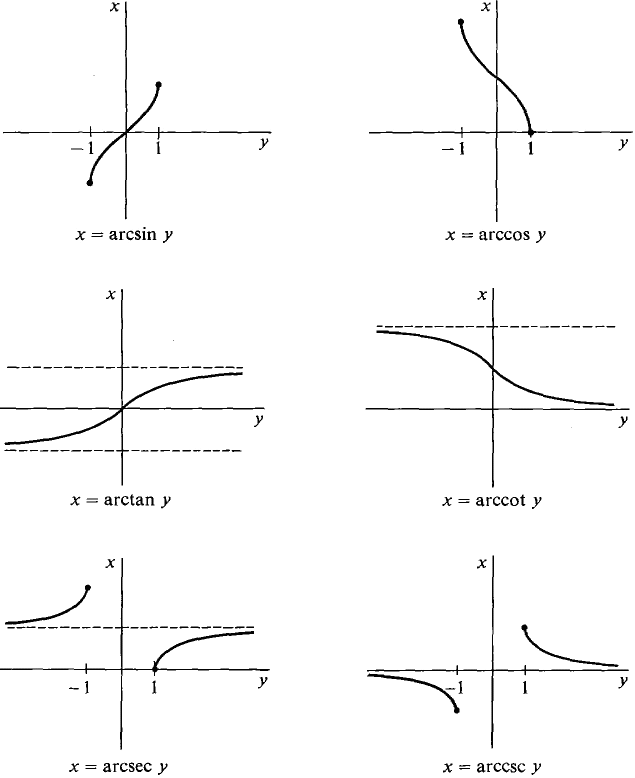| The ebook Elementary Calculus is based on material originally written by H.J. Keisler. For more information please read the copyright pages. |

|

Home  Trigonometric Functions Trigonometric Functions  Inverse Trigonometric Functions Inverse Trigonometric Functions  Inverse Trigonometric Function - Definitions Inverse Trigonometric Function - Definitions |
|||||||||||||||||||||||||||||||||||||||






|
|||||||||||||||||||||||||||||||||||||||
Inverse Trigonometric Function - Definitions
The other trigonometric functions also are not one-to-one and thus do not have inverse functions. However, in each case we obtain a one-to-one function by restricting the domain to a suitable interval, either [ - π/2, π/2] or [0, π]. The resulting inverse functions are called the arccosine, arctangent, etc. DEFINITION The inverse trigonometric functions are defined as follows.
Figure 7.3.5 The graphs of these functions are shown in Figure 7.3.5. The domains of the inverse trigonometric functions can be read off from the graphs, and are shown in the table below.
We can prove the inverse trigonometric functions have these domains (i.e., the figures are correct) using the Intermediate Value Theorem. As an illustration we prove that arcsin y has domain [- 1, 1]. arcsin y is undefined outside [-1,1] because - 1 ≤ sin x ≤ 1 for all x. Suppose y0 is in [-1, 1]. Then sin (-π/2) -1 ≤ y0 ≤ 1 = sin (π/2). sin x is continuous, so by the Intermediate Value Theorem there exists x0 between -π/2 and π/2 such that sin x0 = y0. Thus arcsin y0 = x0 and y0 is in the domain of arcsin y.
|
|||||||||||||||||||||||||||||||||||||||
Home  Trigonometric Functions Trigonometric Functions  Inverse Trigonometric Functions Inverse Trigonometric Functions  Inverse Trigonometric Function - Definitions Inverse Trigonometric Function - Definitions |
|||||||||||||||||||||||||||||||||||||||
Last Update: 2006-11-05


